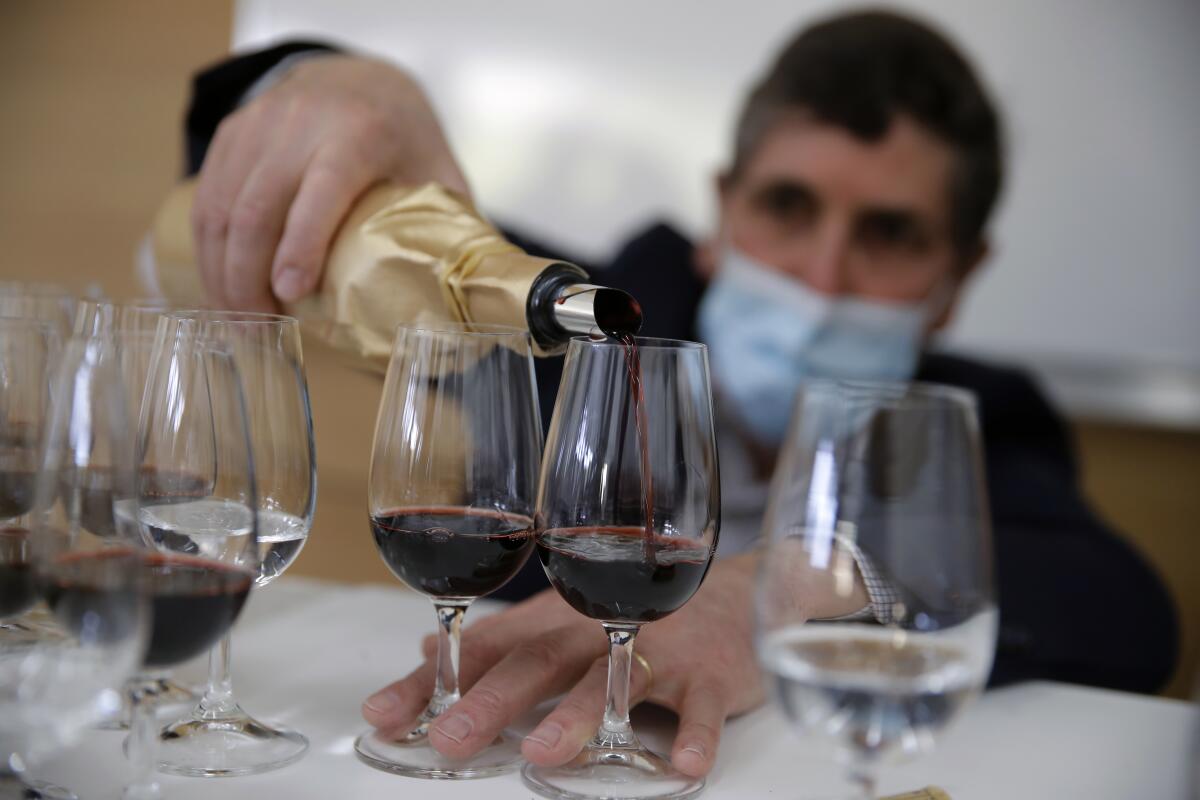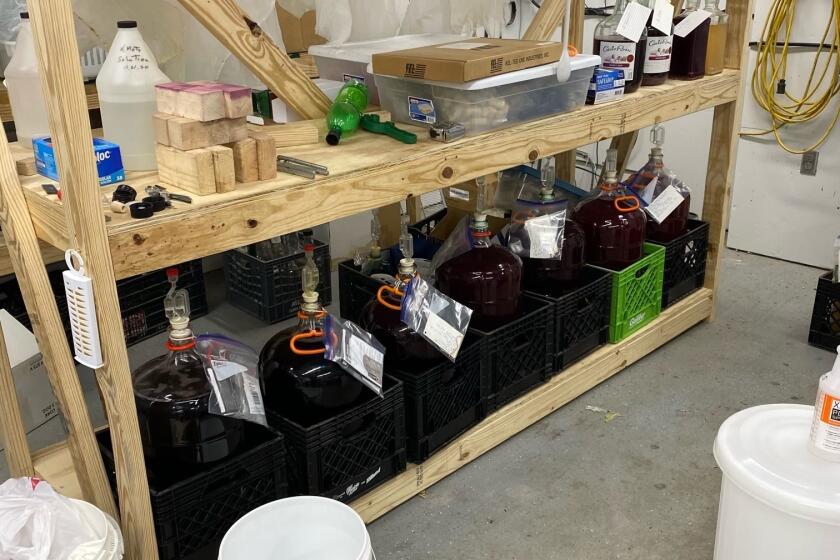Fine wine that spent time in space is back down to Earth, even if its price isn’t

- Share via
BORDEAUX, France — It tastes like rose petals. It smells like a campfire. It glistens with a burnt-orange hue. What is it? A nearly $6,000 bottle of Chateau Petrus Pomerol wine that spent a year in space.
Researchers in Bordeaux, in southwestern France, are analyzing a dozen bottles of the precious libation — along with 320 snippets of Merlot and Cabernet Sauvignon grapevines — that returned to Earth in January after a sojourn aboard the International Space Station. They’re expected to release preliminary results Wednesday.
The heavenly wines are part of a longer-term effort to make plants on Earth more resilient to climate change and disease by exposing them to new stresses, and to better understand the aging process, fermentation and bubbles in wine.
At a one-of-a-kind tasting this month, 12 connoisseurs sampled one of the well-traveled wines, blindly tasting it alongside wine from a bottle of the same vintage that had stayed in a cellar.
“I have tears in my eyes,” said Nicolas Gaume, CEO and cofounder of the company that arranged the experiment, Space Cargo Unlimited, as the bottles were carefully uncorked at the Institute for Wine and Vine Research in Bordeaux.
“When you expose wine, when you expose cells, plants to an environment without gravity ... we create tremendous stress on any living species,” he said.
How many more scorched summers can the king grape of Napa Valley survive?
Jane Anson, a wine expert and writer with the Decanter, said the wine that remained on Earth tasted “a little younger than the one that had been to space.”
Chemical and biological analysis of the wine’s aging process could allow scientists to find a way to artificially age fine vintages, said Michael Lebert, a biologist at Germany’s Friedrich-Alexander-University.
The vine snippets — known as canes in the grape-growing world — not only all survived the journey but also grew faster than vines on Earth, despite limited light and water.
It’s too early for the researchers to determine why. But when they do, Lebert said it could help scientists develop sturdier vines on Earth — and pave the way for grape-growing and wine-making in space.
Plus, he said, “grapes ... are very healthy for the astronauts.”
Private investors helped fund the project. The overall cost wasn’t disclosed.
An Alabama sheriff’s office says it busted an illegal winery operating at a city’s sewage plant.
For the average earthling, probably the main question is: What does cosmic wine taste like?
“For me, the difference between the space and Earth wine ... it wasn’t easy to define,” said Franck Dubourdieu, a Bordeaux-based agronomist and oenologist, an expert in the study of wine and wine-making.
Researchers said each of the 12 panelists had an individual reaction. Some observed “burnt-orange reflections.” Others evoked aromas of cured leather or a campfire.
“The one that had remained on Earth, for me, was still a bit more closed, a bit more tannic, a bit younger. And the one that had been up into space, the tannins had softened, the side of more floral aromatics came out,” Anson said.
But whether the vintage was space-flying or earthbound, she said, “They were both beautiful.”
More to Read
Sign up for Essential California
The most important California stories and recommendations in your inbox every morning.
You may occasionally receive promotional content from the Los Angeles Times.















